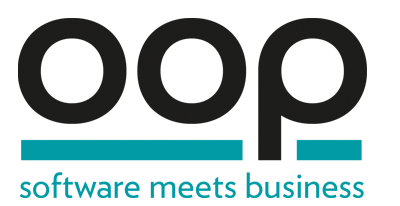
SOFTWARE MEETS BUSINESS:
Die Konferenz für Software-Architektur
03.02. - 07.02.2025

SOFTWARE MEETS BUSINESS:
Die Konferenz für Software-Architektur
03.02. - 07.02.2025

Mehr als 30 Jahre OOP-Erfahrung trifft auf moderne Innovation: Taucht mit uns tief in die wichtigsten Themen gegenwärtiger Software-Architektur ein – auf den "Virtual Deep Dives | powered by OOP".
Diese Konferenz versteht sich als Online-Ergänzung zur OOP München und bietet die Möglichkeit, sich intensiv und interaktiv mit den neuesten Trends und Best Practices in der Software-Architektur auseinanderzusetzen. Unsere Expert:innen und Branchenführer werden tiefe Einblicke in ihre Arbeitsweise geben und wertvolles Wissen teilen, das Sie direkt in Ihre Projekte integrieren können.
» Zu den Virtual Deep Dives
Die im Konferenzprogramm der OOP 2024 angegebenen Uhrzeiten entsprechen der Central European Time (CET).
Eine auf (Micro-)Services basierende Architektur umzusetzen bedeutet, dass auch die Datenhaltung auf die verschiedenen Services verteilt werden muss. Was aber bedeutet das in der Praxis? Was ist, wenn Daten einer Entität - vollständig oder in Teilen - in mehreren Services benötigt werden? Wie wird referenzielle Integrität über mehrere Services hinweg realisiert? Wie lassen sich serviceübergreifende Transaktionen realisieren?
Dies sind nur einige von vielen Fragen, die im Rahmen dieser Session…
Altersdiverse Teams tragen viel Konfliktpotenzial in sich. Sie zu führen ist oftmals eine große Herausforderung. Diskussionen über unterschiedliche Ansichten behindern den Projekterfolg. In diesem Talk möchten wir Verständnis schaffen, Missverständnisse aufklären und lösungsfokussierte Tipps für die erfolgreiche Führung von Teams mit Generationenmix anbieten.
Zielpublikum: Manager:innen, C-Level, Projektleiter:innen, Agile Coaches, Führungspersonen, geplagte Teammitglieder:innen
Voraussetzungen:…
A successful start-up was acquired and needed to scale to at least three times its size. Leadership, processes, tools and mindsets were not ready, nor aligned on how to make that transition. Through our work supporting them, the company changed, scaled and grew. The company did so well, that the leadership team eventually had the choice to leave, knowing their creation would thrive.
Target Audience: Leaders, Managers, Coaches, Decision Makers, CTO, Engineering Managers
Prerequisites: Basic…
This session will provide you with insights into the core skill of slicing work and how it is crucial to business agility. Using real-life scenarios, we'll explore the different dimensions of how slicing affects work, including ease of delegation, adapting scope, quality control, measuring and assessing progress, and improving using feedback.
This session will give you inspiration and practical tips for how to slice your projects differently.
Target Audience: Decision Makers, Managers, Project…
Leider sind viele skalierte Entwicklungen bürokratisch träge.
Der Vortrag führt in den Agile Descaling Cycle ein, der als Werkzeug helfen kann, eine eigene schlanke Skalierungsstruktur zu finden; unabhängig davon, ob bereits skaliert gearbeitet wird oder nicht.
In der Session können die Teilnehmenden selbst ein paar Techniken ausprobieren, die ihnen helfen, die eigene Skalierungsstruktur zu finden.
Die Teilnehmenden haben nach der Session eine Idee, wie sie die eigene Skalierungsstruktur…
Leaders should be passionate, think strategically and influence their people (a.k.a. followers).
How is that possible without empathy, self-consciousness & resiliency?
How is that possible without emotional literacy?
Spoiler: It isn’t!
But - god forbid - nobody wants to be labelled as “being emotional” at work, right?
Join me to leverage your emotional data as the true assets they are. Expand your horizon with serious psychological background and get some of my real-life rants on top for free…
The voyage from transactional to transformational management often appears as intricate as navigating the intermingling of rivers and the sea. In estuaries' shifting currents, represent challenges, especially at the management level, entrenched in orthodox practices.
A fusion of two perspectives was our compass. It allowed us to interpret the undercurrents of change, discern the underlying constraints and constructors, and evolve a smaller, productive team from a larger non-functional gathering…
After years of contributions, there is still a disconnection at the boundary between the leadership development world and agility. On one side, there are proposals on the role of the leader. On the other side, “frameworks for scaling”.
Especially at scale, agile leadership is the art of integrating modern collaborative leadership concepts and sound emergent strategies for organisational development.
In this interactive session, we will discuss the overarching structure of agile leadership and…
Diese Session führt die Teilnehmer in die innovative "Growth Mapping"-Methode ein, ein allgemeingültiges Werkzeug zur Identifizierung und Planung des persönlichen Wachstums. Wir konzentrieren uns speziell auf die "Leadership Growth Map", eine Anwendung von Growth Mapping speziell für Führungskräfte. Die Teilnehmer lernen, wie sie Growth Mapping nutzen können, um ihr persönliches Wachstum als Führungskräfte zu planen und zu fördern.
Zielpublikum: Führungskräfte, Projektleiter:innen,…
Managers and leaders worldwide struggle to decide between projects A, B, or both. Traditional estimation techniques fail because humans can't predict the future. This talk proposes a simulation-based approach inspired by investment strategies, industrial management, and poker playing. By leveraging AI, forecasting, and computing power, simulations offer a reliable and adaptable portfolio planning strategy. Rather than relying on human estimation, simulations streamline decision-making and…
Ein Agile Coach ist trotz des Rollennamens viel mehr als „nur“ Coach. Unserer Überzeugung nach nimmt ein Agile Coach fünf Rollen im stetigen Wechsel ein: Mentor:in, Coach, Berater:in, Facilitator und Trainer:in. Dieser Vortrag ist eine Reise durch die verschiedenen Arbeitskontexte, Rollen, Wissensgebiete und Erfahrungsbereiche eines Agile Coach. Gemeinsam lernen wir echte Agile Coaches kennen und erfahren, wie diese ihre Rolle leben und welche Wirkung sie entfalten.
Zielpublikum: (Agile)…
Klimawandel, Energiewende, ChatGPT und der Krieg verändern die Art, wie wir die Zukunft sehen. Neue Paradigmen empfinden wir allerdings als Stress und igeln uns ein. O-Ton von Ingenieuren: "Wir haben Benzin im Blut." Geisteswissenschaftler: "ChatGPT führt in die Hölle der Roboterherrschaft!" Entwickler: "ChatGPT macht Fehler!" Kulturverweigerer vergeuden wertvolle Zeit mit "Fluch oder Segen?"-Diskussionen auf niedrigstem Niveau. Ambivalenzfeste Führung durch den Sturm ist gefragt! Wie wäre es…